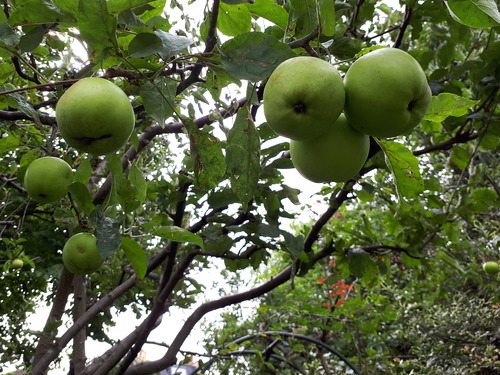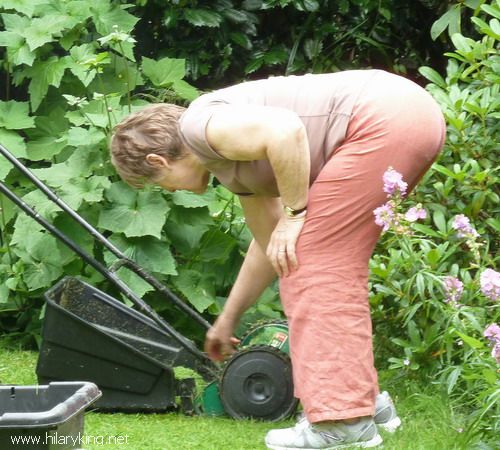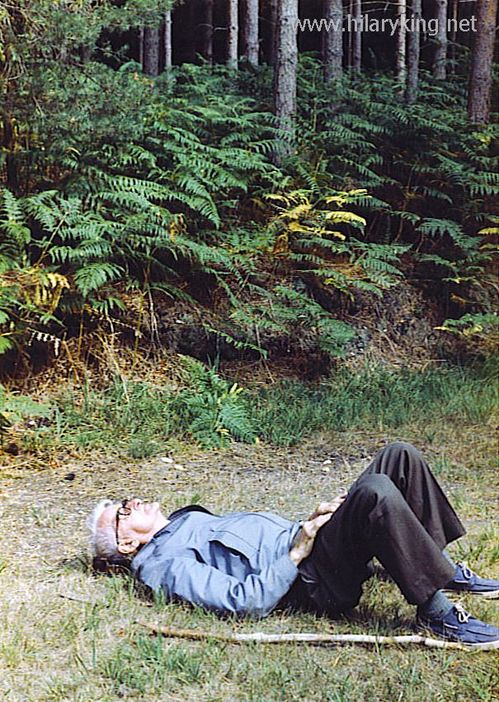Harvest Time!
Even in my London garden, there is fruit to be picked and enjoyed in autumn and I have been doing just that. It’s made me aware of how necessary it is to think of my body-use whilst harvesting. Just how do I climb my apple tree and look up and reach for fruit, whilst looking after my neck? How do I bend down to look under the leaves of raspberry plants to search for the often hidden little balls of sweetness, or pick up windfalls from the grass whilst looking after my back?
Looking Up and Reaching to Search for Apples
It is one thing to briefly look at something above our heads and it is fairly easy to do this mindfully and freely. However it is much harder to maintain our balance and freedom in our neck muscles when we spend a long period of time looking up, as when picking apples, birdwatching, or painting a ceiling.
There are always some apples that are too high to reach – and awkward corners of rooms that can be tricky to get at when you want to paint them! It can be tempting to end-gain and just get on with the job as fast as possible, forgetting to look after ourselves. These situations illustrate why using the Alexander Technique can be so valuable, as we can use it to be aware of our body-use and remind ourselves not to over-reach, or tighten and compress the neck. Continually over-using one set of muscles creates uncomfortable tension and leads to patterns of mis-use. It helps if we frequently allow our heads to change position and come back to a more ordinary poised stance for a while, in order to consciously allow the neck muscles to free up and lengthen out again.
Gardening Requires Lots of Bending Down! Monkey Position to the Rescue
Of course we bend down at all sorts of times in order to put shoes on, or pick up toys from the floor etc but in gardening we often have to spend a long time bending over whilst weeding and planting. Being mindful about the way we bend is important, so that we can protect our necks, avoid getting back pain and maintain a good balance during our movements.
For people who have AT lessons, learning how to ‘Inhibit’ or stop, can sometimes be quite tricky and they may ask ‘Why are we having to do this?’ Well, it is an invaluable concept and when we use it during our daily activities, we give ourselves a very brief pause before starting a task or making different type of movement, which allows us the chance to choose how to do something, so we can avoid getting into old habits that mess us up.
To illustrate – rather than bending forwards with my old habit of curling over, which used to compress my spine and torso, I can pause briefly and remind myself to hinge from the hip joints, so that I fold forwards with a lengthened spine and a body that is able to move and breathe freely. In this way I am also utilising the AT procedure which F M Alexander called ‘the position of mechanical advantage‘ but is now nick-named ‘monkey position‘. This is a movement that comes quite naturally to children and some adults. We use it in a variety of ways, using a deep version to reach the floor, or a very slight angling forwards with the knees slightly bent whilst cleaning our teeth, for instance – and it’s so much more comfortable for our backs! The woman in the photo above is using an adaptation of the monkey position, in order to check out the lawnmower.
Semisupine Active Rest Lets Our Spine Decompress
It is also a really good idea to lie down in the semisupine position at the end of doing such activities, so that we can allow our spines – and whole body – to decompress and to free up.
Applying the Alexander Technique to Our Everyday Activities
When I teach, I spend a lot of time Alexander Technique lessons helping students to learn how to sit, stand and walk freely. Students can then transfer this learning into other activities and they learn some specific procedures like Monkey and Active Rest procedures. However, some people wonder how to use everything they learn out in the ‘real world’ and make the AT a tool they can use throughout life.
Therefore, as part of the lesson, I will sometimes explore different activities with pupils, so that they can think about how to apply and include the AT into their thinking whilst performing these.
Examples of activities I’ve explored with pupils recently:
- one student thought about how to do exercises the physio had given her
- two explored how to use a mouse and keyboard
- another fine tuned how to play a guitar
- one tried moving a table differently
- and one explored how to bend over in order to clean the bath!
The important words here are ‘how to’. When we include the ‘how’ into our awareness and change the way in which we perform actions, we can begin to recover from conditions such as back pain or RSI.
Such a relief!
Remember
- STOP
- THINK
- CHOOSE HOW TO RESPOND
This short video of the lying down procedure was produced by the Society of Teachers of the Alexander Technique, STAT: https://youtu.be/NhxMNou1Tfo


